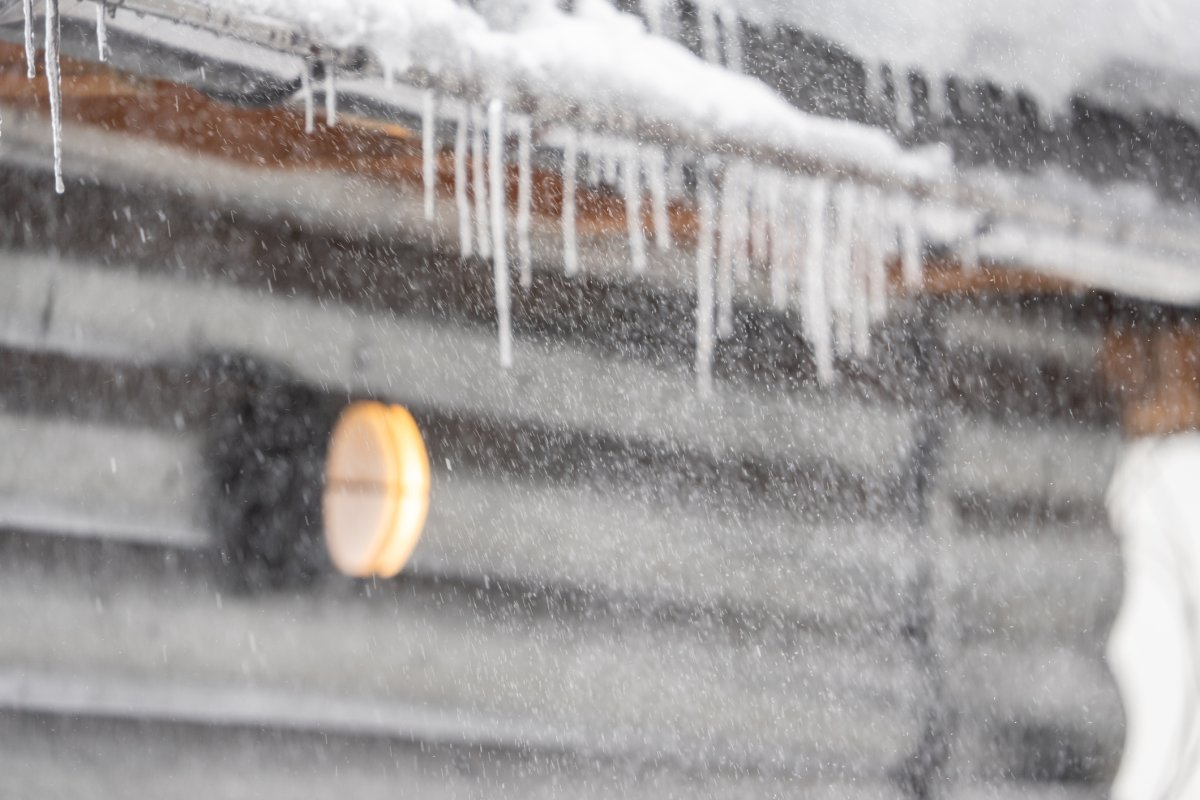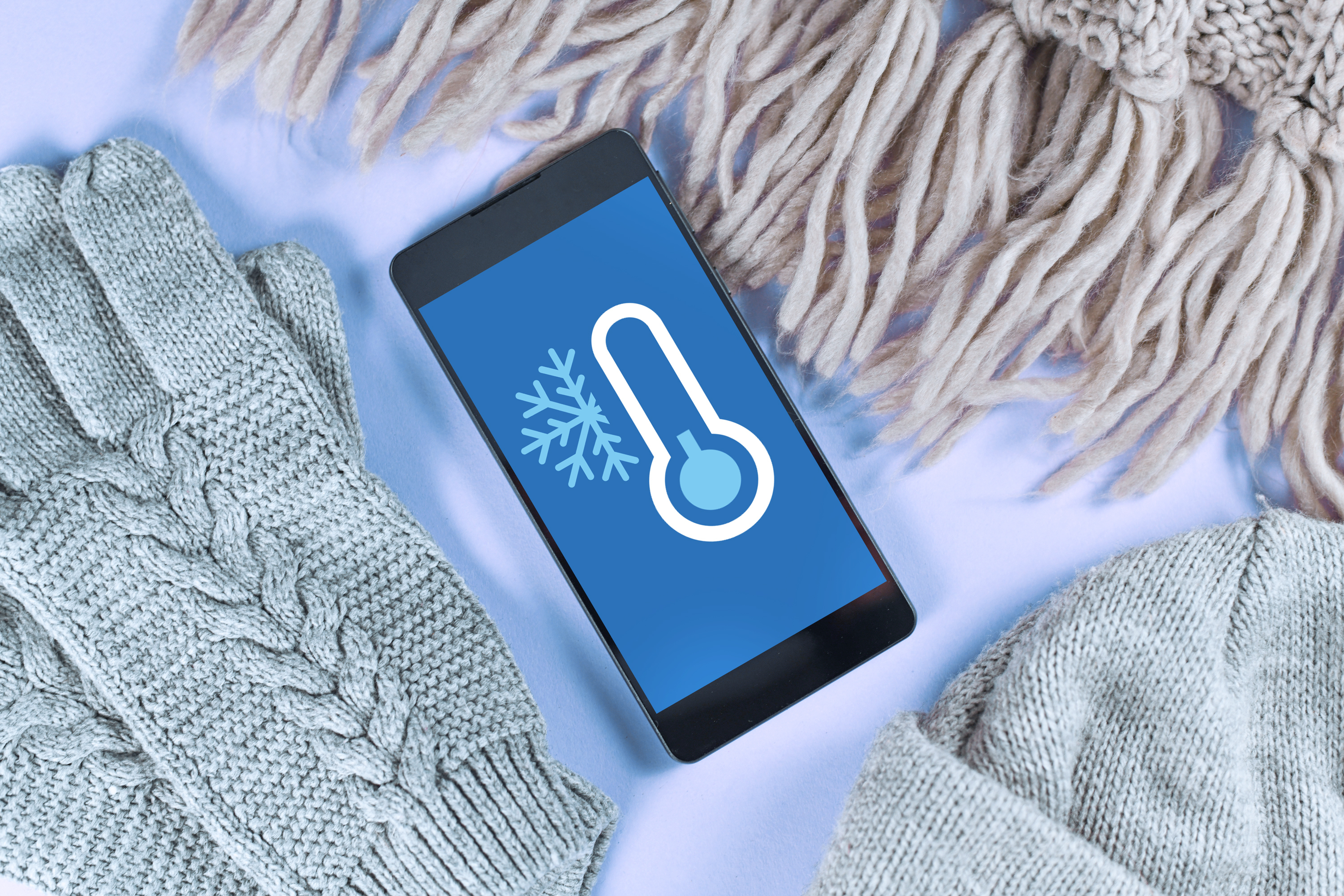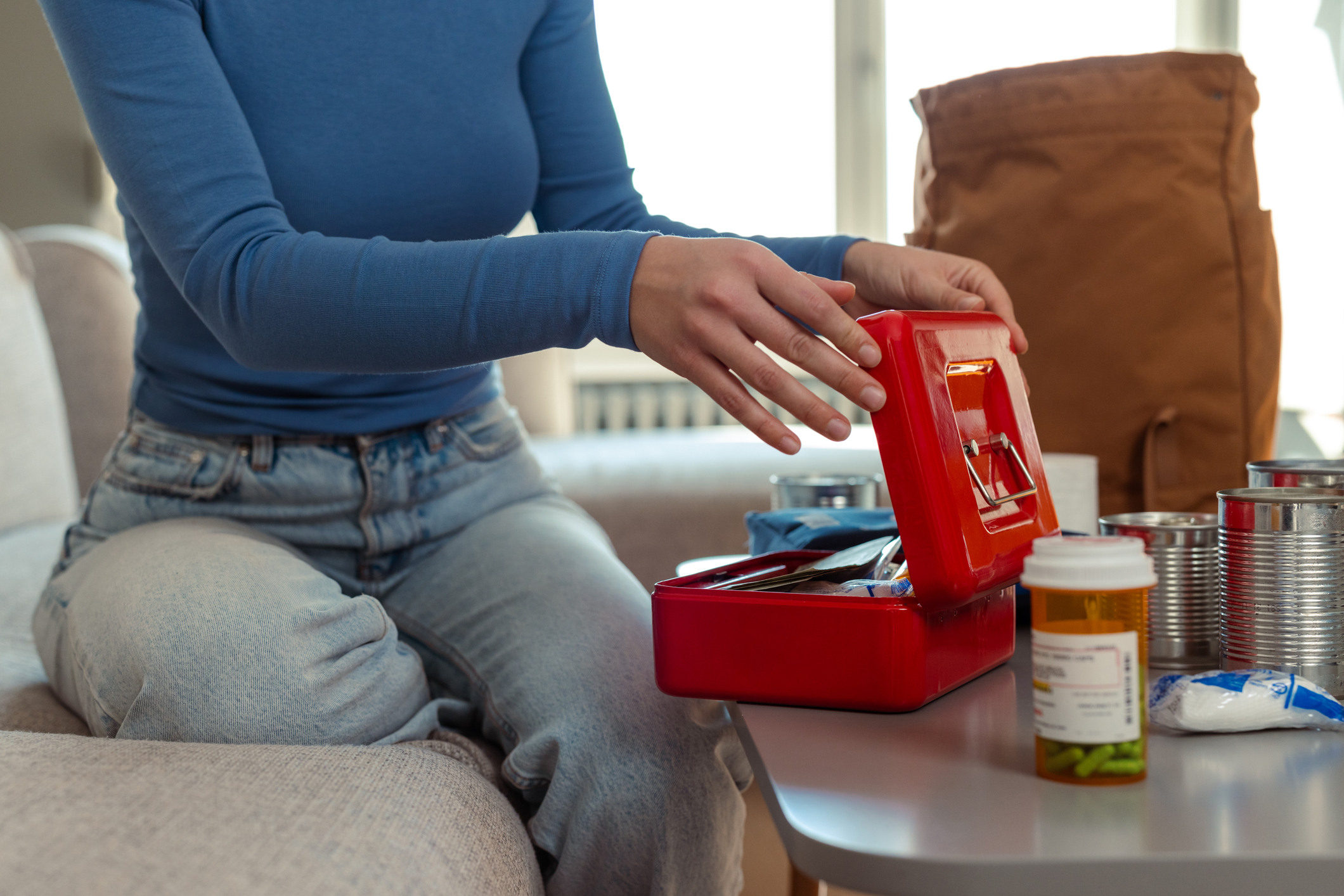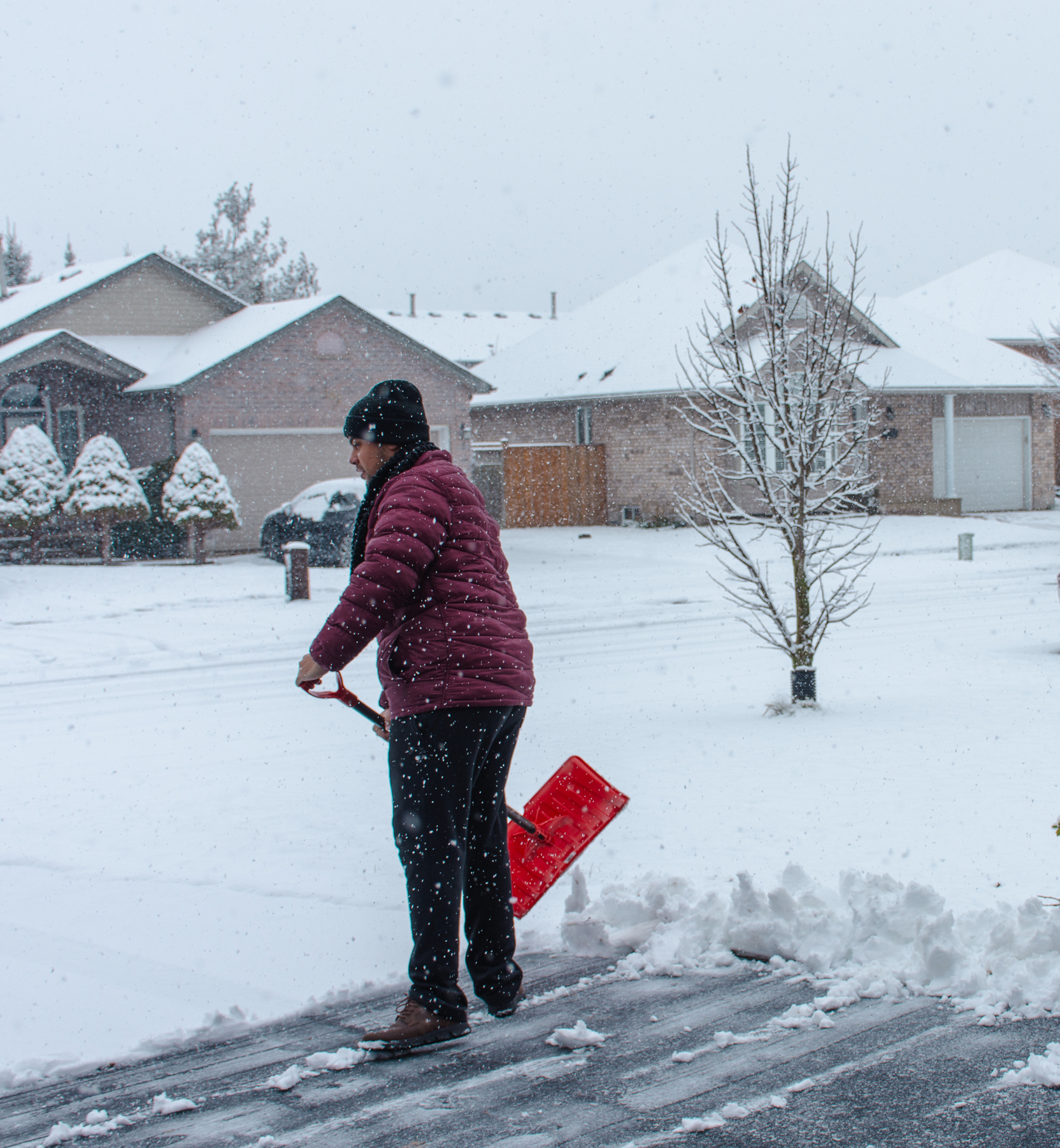

We may earn revenue from the products available on this page and participate in affiliate programs. Learn More ›
When you get word that a major snowstorm is coming, your first reaction might be to panic. While winter storms can pose a serious threat, try to remain calm. Develop a plan of action to ensure that you’re prepared to stay safe and that your home and belongings are as protected against damage as possible. Continue reading to learn how to prepare for a blizzard.
Tools & Materials
Bobvila.com may earn a commission from purchases made through these links.
Blizzards are accompanied by extreme cold, winds, ice, and other dangerous conditions. When you’re facing an upcoming snowstorm, there are several things you can do to protect your home from the damages that such conditions can cause. These winter safety tips include steps like monitoring weather conditions, gathering supplies you might need to clear snow for a power outage, and preventing problems caused by ice and plunging temperatures.
Step 1: Monitor your local weather.
When a winter storm is on the way, monitor your local weather often. The timing, severity, and expected impacts of the storm can change rapidly. Monitoring conditions and forecasts can help ensure you’re prepared to safely ride out the storm.
To understand potential effects of the forecast, it is essential to know the difference between the different types of winter alerts issued by the National Weather Service (NWS). NWS alerts will be classified as an advisory, a watch, or a warning, progressing from being aware to taking action.

Advisories alert you to the potential for upcoming winter weather.
- Winter Weather Advisory: These advisories are issued when winter weather conditions (snow, ice, sleet, and/or blowing snow) are in the forecast.
- Wind Chill Advisory: Wind chill advisories indicate that low wind chill temperatures are likely, but not be low enough to reach the warning level.
- Lake Effect Snow Advisory: This type of advisory calls out the likelihood for localized or widespread accumulations of lake effect snow, though accumulation levels are expected to be below the criteria for a warning.
Watches are designed to inform you the conditions are favorable for winter weather conditions.
- Winter Storm Watch: A winter storm watch alerts residents that a winter storm (heavy snow, sleet, ice, and/or blowing snow) is likely due to favorable conditions in the area.
- Wind Chill Watch: These watches indicate the potential for dangerously low wind chills caused by cold air and strong winds.
Warnings alert you to current or imminent unsafe conditions from winter weather. These are the most serious alerts. They should be taken seriously and require immediate action.
- Blizzard Warning: A blizzard warning indicates the presence of frequent wind gusts of 35 miles per hour or greater during or following a snowstorm. Heavy wind gusts and blowing snow can decrease visibility and create hazardous travel conditions.
- Winter Storm Warning: A winter storm warning alerts to imminent snow, ice, sleet, and/or blowing conditions. With these conditions, travel is hazardous or impossible and should be avoided.
- Wind Chill Warning: This type of warning is issued when the combination of extremely cold air and high winds will produce a wind chill level low enough to cause frostbite or hypothermia. Going outdoors in such conditions, particularly without proper outdoor gear, is not advised.
- Ice Storm Warning: An ice storm warning is issued when accumulations of ¼ inch or more of ice are forecasted. High ice accumulations increase the likelihood of downed power lines, broken tree branches, and unsafe walking or driving conditions.
- Lake Effect Snow Warning: These warnings are issued when it is expected that localized or widespread lake-effect snow squalls will yield heavy snowfalls and accumulations.

Step 2: Gather emergency supplies.
When you hear a snowfall warning, it is important to ensure you are prepared. So, how do you prepare for a snowstorm? One of the most important things to do beforehand is to gather supplies to help survive in the event you lose power or need to leave your home without warning. Below are some supplies and tools for going through blizzards to prepare before a storm hits:
- 3-day supply of water and nonperishable food (1 gallon of water per person per day)
- Flashlights with extra batteries
- A 1-month supply of prescription medications or necessary medical supplies
- Battery-powered or hand-cranked emergency radio
- Backup batteries or power banks for cell phones and other electronics
- Warm clothing (hats, gloves, coats, etc.) for every household member
- Blankets
- First aid kit
- Diapers, formula, and any other baby essentials (if applicable)
- Manual can opener
- Firewood for a fireplace or stove (if applicable)
- Fire extinguisher
- Working smoke detectors
- Snow shovel
- Ice melt
- Extra gasoline and snow shovel for the car
Step 3: Keep your pipes from freezing.
The extreme cold temperatures that accompany blizzards (and the potential power outages that they cause) can cause the water in your pipes to freeze. Therefore, learning how to keep pipes from freezing is essential. If the water in the pipes freezes, pipes can crack or leak, leading to water damage, mold, and a host of other costly and frustrating problems.
Several measures can minimize the chances that your pipes will freeze. Adding some of these steps to your winter preparation checklist can help you prepare whenever cold weather strikes. Bill Martin, president and CEO of Plymouth Rock Home Assurance, highlights the importance of turning off and draining outdoor water lines. “Cold temperatures can severely damage outdoor water lines, but there are ways to prevent spigots from freezing and bursting. Before the weather turns, you should shut off the water supply, disconnect any hoses, drain outdoor faucets, and use air bleed caps to ensure no water is left outside to freeze,” he says.
During the blizzard, you can open the cabinet doors in your kitchen and bathroom around the plumbing. Doing so will let some of the warmer air from the house circulate into these areas, helping keep the pipes a bit warmer. For short periods (up to a few days) of extremely cold weather conditions, Martin says to turn on the faucets and let “a slow drip of cold water come from the bathroom and kitchen sinks as the water movement prevents ice blockages from forming in your pipes.”
For a longer-term solution, consider adding insulation around your pipes. “Pipe insulation is a small investment compared to the repair costs of a burst water pipe. Be sure to insulate pipes located in unheated areas, such as the attic, basement, crawl spaces, or garage,” says Martin. This will give you some peace of mind the next time a blizzard alert comes through.

Step 4: Be prepared for a power outage.
Regardless of whether you’re expecting a snowstorm, ice storm, or freezing rain, you should be prepared to lose power. Blizzard weather consists of high winds and heavy snow, both of which can lead to downed power lines. Steve Powell, executive vice president of property and catastrophe at Sedgwick says, “Have a plan for heat and lighting in case you lose power and have a backup plan if your home loses heat, like staying with a neighbor or at a warming shelter.” If you have a generator, you can get it set up and ready to use. Just remember Powell’s advice: “Never run a generator indoors, the carbon monoxide will kill you.”
While your home still has power, keep cell phones, medical equipment, and other electronic devices charged. If you have backup batteries or power banks, ensure they are plugged in and fully recharged before the power goes out.
Step 5: Stay off icy roads if possible.
Driving in blizzard conditions can be hazardous. In most cases, the safest option is to stay home, where you won’t need to face falling snow or potential whiteout conditions caused by blowing snow. If your car stalls or gets stuck on the side of the road, and help cannot get there quickly, you run the risk of getting frostbite or hypothermia.
If you must drive somewhere, take the proper safety precautions. Pack extra blankets, hats, and gloves, a snow shovel, and a first aid kit in your car. Dress in layers, and be sure to wear waterproof boots. When driving, exercise extreme caution and go slowly. If your car gets stuck, stay inside of it instead of venturing out into the cold. The NWS recommends turning the car on for about 10 minutes each hour to keep it from getting too cold, but also says to crack a window and ensure the exhaust pipe is clear to prevent carbon monoxide or gas poisoning.
Being prepared before the blizzard hits can help keep you safe if you need to drive during snowy, windy, or icy conditions. Fill up your tires and check their treads to make sure they’ll provide the traction necessary when driving on slippery roads. Stay up-to-date on necessary maintenance, particularly oil and antifreeze changes. Finally, inspect your car’s battery (or have a professional check it) and top off your gas tank.

What to Do After a Blizzard
Your work isn’t finished after the blizzard has ended. After checking on loved ones and ensuring everyone is safe, it is time to assess your property. “If you have property damages: take photos of the damages, contact your insurance company about filing a claim, and take action to prevent further damage,” says Powell.
Next, it will be time to dig yourself out and clear the snow from your car and walkways. If you have a large property, you might consider investing in a snow blower (particularly a more environmentally-friendly electric snow blower). If they’re available in your area, you can also consider hiring out a snow removal service if you don’t have the time or ability to safely clear the snow yourself.
If you’re working outside to clear snow with a shovel or snow blower, protect yourself with a coat, a hat, and gloves. Limit how long you stay outside to lower your risk of frostbite or hypothermia.
Editor’s note: This article was updated to correct one instance of “carbon dioxide” to “carbon monoxide,” in reference to the poisonous gas emitted by home generators.
